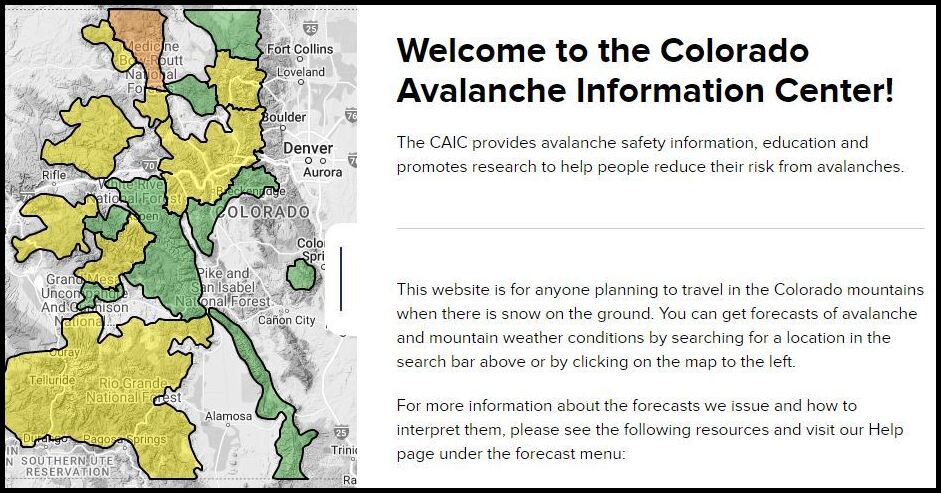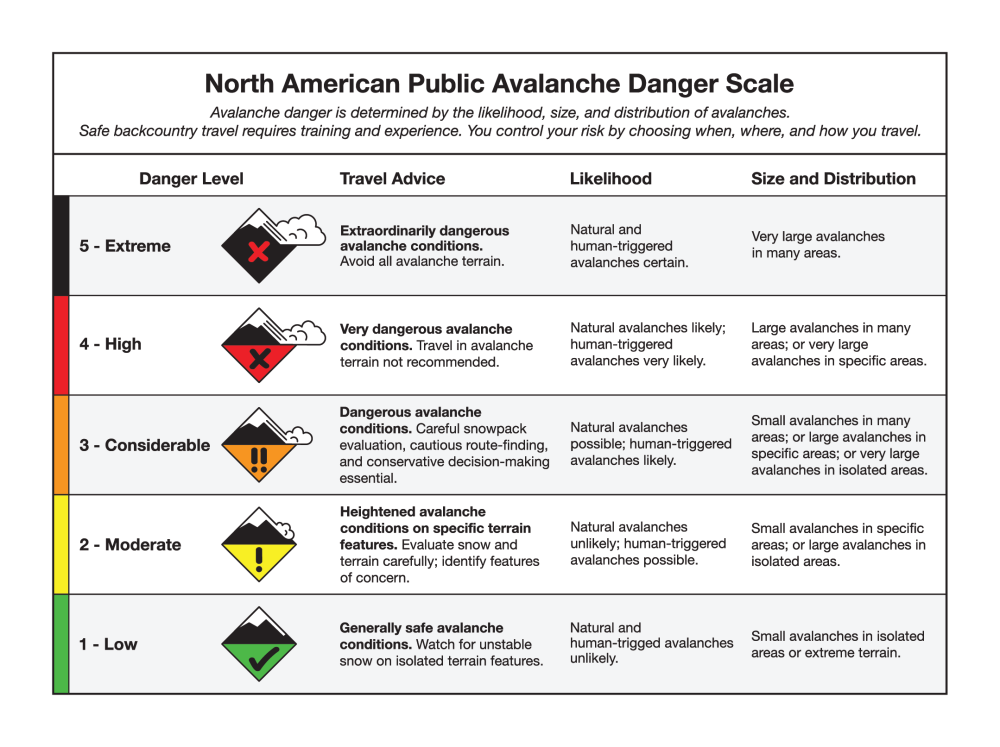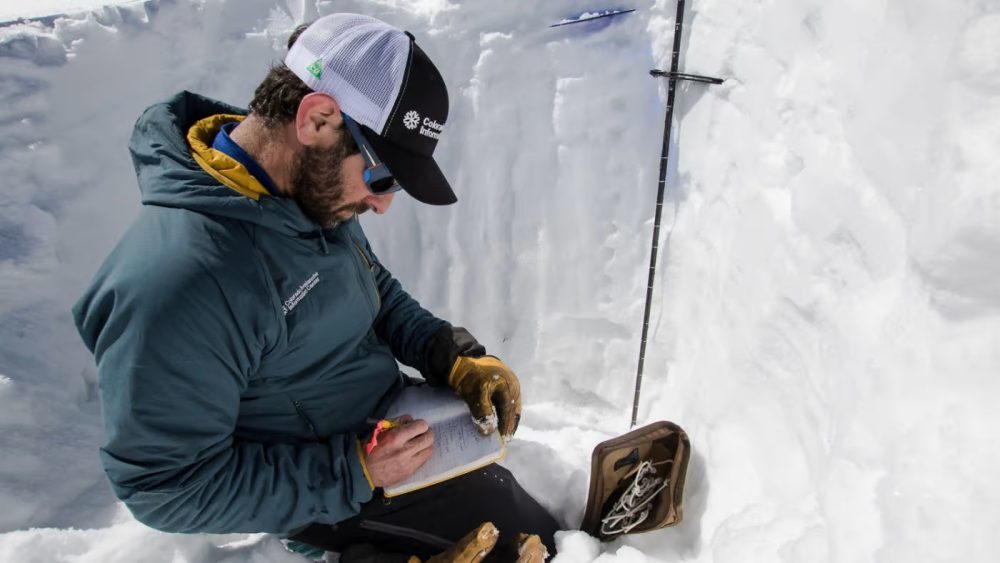
As early-season snow storms begin to blanket the Rockies, the Colorado Avalanche Information Center (CAIC) will begin to issue its daily weather and avalanche forecasts a little differently. On November 1, 2022, the Colorado Avalanche Information Center launched a new website, creating dynamic forecasts and avalanche threat levels, as well as daily 48-hour forecasts issued every afternoon at 4:30 pm. The tremendous work of the project is a direct yield of the partnership between Avalanche Canada and the CAIC, which began formally back in 2019.
The New Website
The CAIC has optimized its new site to not only perform faster but also reach a wider range of tech devices. The main feature comes on the home page, where an interactive map of recent avalanches in Colorado sits. Hover over the colored-in areas to read more information about avalanche chances and threats. To search for a specific location, drop a pin on the map or search by name, and current avalanche forecasts for that area will appear. For a more detailed walkthrough, check out the official introduction video of the website provided by the CAIC.
Dynamic Forecasting
This season, the CAIC is taking a step into innovation by providing forecasts of zones with dynamic shapes. Before, the CAIC issued forecasts in ten predefined zones, acting as spatial containers where avalanche danger ratings were set. Now the forecasts will be issued for areas based on similarity, and can vary by size and shape based on snow conditions. There could be ten or fewer zones on less snowy days, and fifteen plus on heavier snow days. The change in forecasting methods comes from the heavy variance between snow conditions and locality within Colorado.
“Have you ever seen the avalanche conditions vary between Cameron Pass and Berthoud Pass? Or Loveland Pass and Vail Pass? Independence Pass and Marble? Maybe Telluride and Lake City? Well, we have and it would be easy to make that list much, much longer.” – Ethan Greene, CAIC
Forecasting across ten zones started fifteen years ago, with climatology, topography, access issues, and others as the considering factors. Adding in the ability to forecast avalanches dynamically provides a better service to those planning tours out in the backcountry. With more flexibility in the approach to forecasting, the CAIC becomes even more accurate and informative on avalanche risk.

Afternoon Forecasts
For a forward-looking approach, another new addition this winter will be the 4:30pm avalanche forecasts. This service will provide a 48 hour avalanche risk prediction across three different elevation bands. Although issued daily in the afternoon, the CAIC has ensured that if conditions change to what’s been forecasted, they will make prompt updates in the morning.
“Don’t worry, we’ll still be in the office each day at 4:00 AM. If it snows a lot more, or a lot less, than we expect, we’ll update the backcountry products. Whether you plan your backcountry outing over pint glasses or coffee mugs, there will always be a valid forecast.” – Ethan Greene, CAIC
Website updates, dynamic forecast zones, and scheduling are the output of multiple years of hard work from Avalanche Canada and the CAIC. Together, they have created a world-class avalanche forecasting method. The process is based on the Conceptual Model of Avalanche Hazard, a widely-used model written and built by Grant Statham. Avalanche Canada, Parks Canada, and the CAIC all use the same software to create their forecasts on the backend. However, they have different front-end displays to show their forecasts to the users.
The new website is a continued step into the development and innovation towards avalanche science and safety. The CAIC, Avalanche Canada, and Parks Canada continue to make improvements to their forecasting. Other forecasting tools are planned for development in the near future. For more information, please check out the CAIC website.
